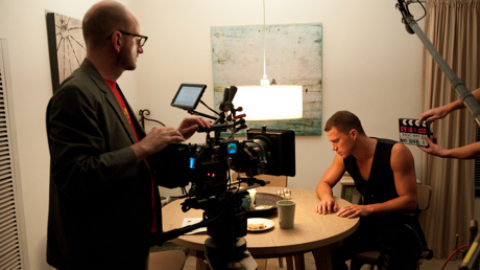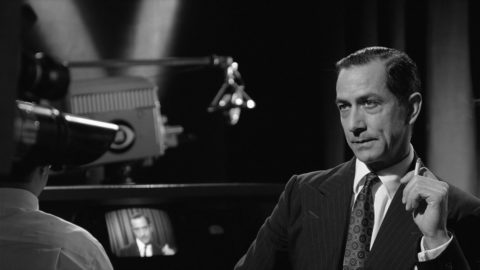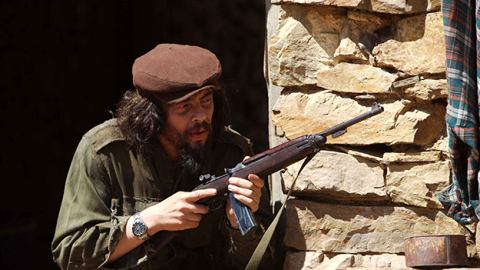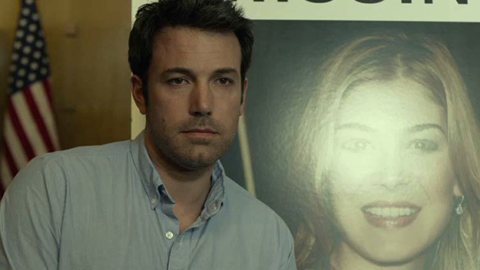Interview: Steven Soderbergh
Imagine the perfect movie for the appalling, even frightening, summer of 2017. If you were Steven Soderbergh, you might have imagined Logan Lucky, although the script for this riotous, coal-country-set heist flick landed on your desk in 2014 and finished shooting over a year ago, i.e. before the 2016 election. You might have imagined Channing Tatum (whose acting chops and star quality you had nurtured with Magic Mike just as you had George Clooney’s with Out of Sight) as Jimmy Logan, a former coal miner whose bum knee cut short his football dreams, and who’s now in danger of losing his visitation rights with the 10-year-old daughter he loves after he’s fired, because of said bum knee, from his only means of support: a temp job filling in sinkholes beneath the Charlotte Motor Speedway. Jimmy is mad enough at the bosses and desperate enough at the thought of his daughter moving away for his fired-up brain to seize on something he noticed while filling those sinkholes: that all the speedway’s concession cash is fed into pneumatic tubes that terminate in a steel enclosed room in the basement. Jimmy wants that money and to that desire he recruits a crew. Again, if you were Soderbergh reading this script, you might have imagined the dour Adam Driver as Clyde, Jimmy’s brother, who lost an arm in Iraq; and Riley Keough (another actor you nurtured) as their sister, Mellie, whose handling of a Blue Mustang more than makes up for anything you won’t see on the track during the Coca-Cola 600. And you might have had the inspiration to cast Daniel Craig, reveling in a platinum buzz cut and a sort-of-Southern drawl as wide as it’s long, as the demolition expert, Joe Bang, just the man to break into this giant safe, except for the fact that he is “in-car-ce-ra-ted.” What is, um, visionary about Logan Lucky is that it’s a comedy that loves all its characters, even when it allows them to occasionally satirize themselves. The film is set in Appalachia, and its heart is in a one-for-all and all-for-one brand of socialism among people who know that it does matter who’s running this country, and that they have to get what they need by themselves.
Logan Lucky opens on 3,000-plus screens today, released by Soderbergh’s company Fingerprint through the distributor Bleecker Street. (Check out the trailers that the director cut himself.) I interviewed Soderbergh in his downtown office about 10 days ago. Despite his customary cool body language, it was evident from the slight tremor in his voice that he was anxious about how the movie would land. There is more at stake here than a single movie. Soderbergh has devised a method of financing and release for the film that bypasses the studios and updates old indie film practices to take advantage of new viewing platforms. Our conversation segued from Logan Lucky to Mosaic (long in the making and coming in November) and back to Logan Lucky and how, if it is financially successful, it could change not only Soderbergh’s future but also the futures of other filmmakers.
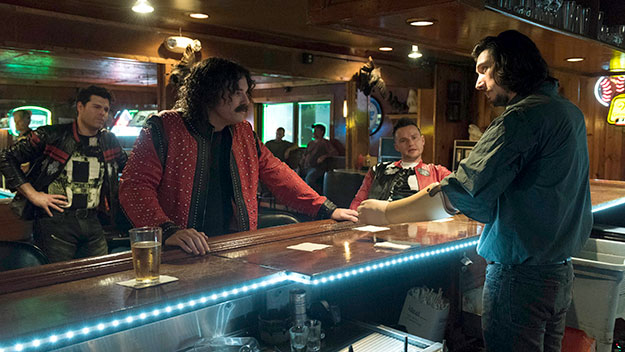
This movie looks like a big piece of pop art—specifically like a James Rosenquist—in the way the colors pop and in the huge close-ups of faces and objects of daily life. In the movies that you’ve shot yourself as Peter Andrews, there have been two basic color schemes—a blue one and a reddish-brown one. You use them to signify different story lines or different locations. And within that basic color frame, the images are pretty monochromatic, so that even if you have a yellow object in a blue shot, the yellow is muddied with blue. But in Logan Lucky, the colors really pop all the time. It’s not that you’re using a different camera. It’s still the RED EPIC, isn’t it?
We were working in a different color space than we normally do. One of the many layers of experimentation of this project involved some things in postproduction that are sort of forward- looking in terms of how we are going to archive things. So we ended up in a color space that, when converted to the color space you use for projection, did some really interesting things that I hadn’t seen before. Initially there was some alarm from people on the post crew. I thought it looked great because certain colors were really exploding. And everyone was asking, “Do you want to desaturate that?” and I said, “No, I think it looks kind of cool.” It was a happy accident, and instead of backing off, I said let’s push it even further. There’s no rational reason why we should do that. But I think when we were looking at the first scene in the bar, I just thought this is going to work.
The technology just keeps getting more interesting. Within the next 12 months, stuff is going to emerge that will make things much more exciting. I want everything smaller and lighter so I can put the lens anywhere I want as fast as possible. It’s still frustrating to try to get a camera somewhere and if it’s above someone you have to secure it so if it falls it’s not going to hurt somebody. I want a camera that you can just Velcro to the wall. This is off-topic, but one thing I haven’t read a lot about is how transformative digital has been for documentaries. You are seeing a kind of documentary now that was not physically possible 15 years ago. The ability now to keep gathering material for years because it’s cheap has resulted in some extraordinary documentaries. You couldn’t afford that if you were shooting film. I just watched Icarus, the doping documentary. That’s a really exciting use of this new tool.
Also people shooting things with small cameras they can hide.
The ability to carry your footage with you on a thumb drive. I look at that and think that landscape has been altered in a good way by this new technology. And then you realize that this how-you-capture discussion just becomes irrelevant if you don’t know what a shot is, if you don’t know how to stage. Then it doesn’t matter what cameras you have.
What is a shot?
A shot is a story. A shot on its own should be a piece of a story. Which is why I talk a lot about watching films, even the films we’re working on, with the sound off. Just to analyze how the film works, because a film should work for an audience without any sound. The biggest problem I see is that someone may have a superficial understanding of what a shot is propositionally, but they don’t have an understanding of how all of these shots are part of a family that needs to connect, and so you’ll get something that’s like a sentence arranged poorly with six nouns in a row. That surprises me, because I think that’s something that can be learned. Some things can’t be, but that can. It’s a grammar. In a classroom I could walk somebody through the difference between a sequence in which the filmmaker has a deep understanding of how images connect, and someone who doesn’t. It’s not really an intellectual process. Some people are just born with it and are just sort of savants at that deep mathematical understanding of shot construction. And it’s something that I …
Got better at.
I’m better than I used to be, but there are some people I’m just never going to catch.
Fincher?
Yeah. Spielberg. His staging ability. I’m never going to catch him. But when you’re trying to figure out how to get better—I’m not competitive in the sense of looking around at other filmmakers and comparing myself to them. What I do have to think about in trying to navigate myself through a career is: what can I get better at, and what do I have that I can enhance that somebody else doesn’t have? And that can be anything from being unconcerned with whether I’m liked…
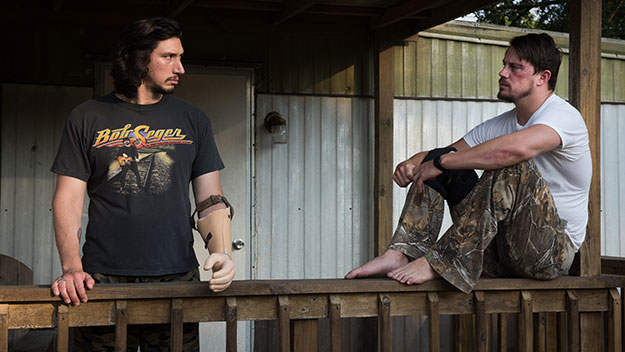
Whether your film is liked?
Yeah. Sometimes I see films, and I can tell there’s a pocket of fear on the part of the filmmaker that is either about boring somebody or having them not like what they’re doing. And I’ve never really been bothered by that. This is all under the umbrella of trying to achieve the “it-ness” of what the thing wants to be. And if it wants to be a certain thing and that thing turns out to be boring for certain people, that’s just the way it is. So I’ve tried to be smart about the things I can do that I can use to my advantage. Stopping my writing was a big part of that. I had written but I wasn’t a writer, and at a certain point I had to acknowledge that and the work got better. I started working with real writers. It’s much more fun. Writing’s the worst. I feel much better about my ability to talk within a room about what I think we need to do. Che was such an unusual experience. It enabled me to shed some things that I needed to. It forced me to simplify my process, and that was really helpful. It wasn’t pleasant, but I came out the other side of it with a different approach to everything.
When you say you came out the other side of it, would you say that Che was an experience you didn’t want to repeat, or are you saying that on it, you found the beginning of something you could expand on?
I think it’s the latter. What I wanted to do is double down on what I learned from it in terms of process, and also in the freedom I felt at not having much interest in making, quote, serious films anymore. It cured me of that. It was a project that I still have a very complicated feeling about. There are things in it that I like a lot, and there are things that I’m frustrated by. But the stripping down that was required to get through it I’ve kept, and it’s helped me a lot.
But if you don’t feel obliged to make films that are going to be liked and you don’t want to make, quote, serious films anymore, then what are your parameters of what you want to do.
Where that puts me is in a sort of genre space. Lately that’s felt like a really fertile space because it’s easy to use whatever genre you’re working in as a vehicle to slide some other ideas in around the center. Even The Knick: the doctor show is the oldest thing in television, and I wanted it to have that kind of energy. I didn’t view it as a drama. I viewed it as a kind of pulpy doctor show. Contagion is a horror film. I viewed The Informant! as a comedy, although some people might not have anticipated that we’d go that way with it. That’s where it led me. Thinking more in terms of genre than anything else. So Mosaic is drama, but …
Yes, Mosaic. What is it?
It’s a branching narrative piece. Branching narratives have been around forever, but technology now allows, I hope, for a more elegant, intuitive form of engagement than used to be possible. We spent a lot of time on how you touch this thing. I wanted to make sure that it was beautiful and simple, so that when the opportunity arises for you to decide whose perspective you want to follow, it feels organic and not like an interruption—like the thing is just stopping cold. So there was just a lot of trial and error about how that would work. I’m really happy with it now. The question now is if a million people log on at the same time, will it crash? It’s supposed to come out in November.
Is there a movie or just an app?
There will be a linear episodic version that’s set to air on HBO in January, but ideally going forward, it would just be an app. I offered HBO the possibility of doing a linear cut because I needed more money to develop the technology. I called them and said I have a lot of material that’s not in the app; “I can cut a six-hour episodic version of this that will be its own thing.” And they said, absolutely.
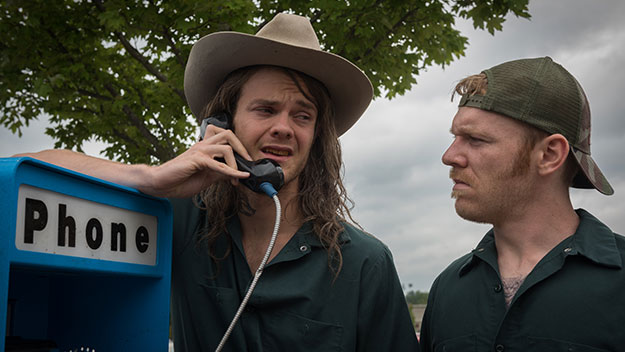
Is the app for your phone?
For your phone, iPad, desktop, Apple TV. Anything. We started thinking we’ll just do iOS. But after long series of conversations, we said it makes no sense while we’re building this thing not to include Android and desktop. While we have the hood open, don’t we want as many eyeballs on this thing as possible? And it’s a free app. So set aside your time, because if you watch all the various nodes, it’s like seven and a half hours. I was very aware while we were making it that this is the cave painting of this format—that somebody else is going to take this thing and push it way further. I was just trying to get a working story. Ed Solomon, who wrote Mosaic, has another piece that’s built on what we did and is going to be much more complex.
Do you want to say what Mosaic is about?
It’s a murder. Not a murder mystery so much. There are two different time frames, one contemporary and one four years ago. This case that everyone thought was solved gets reexamined with interesting results. So you get to go back and forth depending on who you want to follow at what point. It seemed to be a kind of story that benefited from this multiverse perspective. The writing and the editing of it was tricky. The giant board that Ed and I had was a real head-scratcher.
When you download the app, is there one path into it?
You download the app, and the first chapter begins. At the end of that chapter, you are given the possibility of going right or left, and after that you just keep going. There are a couple of companies that are playing with branching narrative.
And as many that are betting on VR.
I don’t know how many people try to convince you that VR is like the new thing. I’m convinced it doesn’t work.
It’s over. Like holograms.
When I hear about these six-minute things, I think that’s kind of interesting. But as a narrative space, VR is never going to work.
Politically, it couldn’t be worse at this moment to close yourself off in this gear and look at something that is supposedly more intensely “real” but is no more so than any other representation.
I get calls from people developing this stuff to come see what they are doing. I went a few times and I told one of them that from a narrative standpoint, this is never going to work, because there is no reverse. You’re never going to have a piece you engage with without a reverse. Looking into the eyes of the character that you’re following is the foundation of narrative. And there is no montage. That’s a gigantic thing to take away from a filmmaker. This is basically theater. You’ve taken editing away from me.
In the general world space, I’ve never believed technology was going to save us. And I never believed that in the narrative [movie] space. What I was happiest with in Mosaic is that it’s utterly simple. We weren’t working back from a piece of technology that we were injecting story into. Ed and I were working on the story, and then we’d say to the tech people, we want to be able to do this. And they would say, let us come back to you when we figure it out. I was very concerned that the story I was going to shoot wouldn’t exist just to prop up some piece of tech. I’m not a gamer and when people say “chose your own adventure,” I just blow up. Mosaic is a fixed universe. Your choices don’t alter what happens. You get to decide how you want to navigate your way through this universe. [As a user or viewer] I don’t want to do the storyteller’s job. Just give me the story. So this for me rides a seam of traditional narrative. It’s not a game—it fell right in this pocket I could relate to. I have a job that’s so fun because it never gets boring.
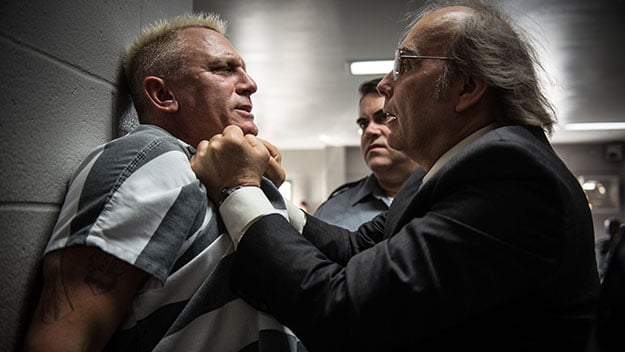
So about Logan Lucky: I knew in the first shot that I was going to love this movie.
I call it the three-shot rule. After the first three shots, I know whether this person knows what they’re doing or they don’t.
As you were talking about Mosaic, I was thinking about how it was reflexive—a story about a re-investigation that the viewer investigates. And Logan Lucky is another process movie, in that putting together a heist is a lot like putting together a movie.
It was so obvious that I didn’t think about it until a week ago when someone asked me what’s the attraction of these caper movies. It’s exactly what you said, and it’s just the kind of story that movies do well. It’s got movement, music, it’s visual. And when, I make one of these, there’s a certain amount of humor. I thought this movie is just a giant candy store, and everybody likes candy. The trick for me, in the midst of this larger experiment with distribution, was trying to stay focused on making a good movie. Or this whole experiment would be pointless. But the moving parts to get this thing set up the way we wanted to send it out were significant. We’d spend a lot of time on the phone about how we’d get this done.
Didn’t you think it was sort of perverse to make a movie set at the Charlotte Motor Speedway and have only about a minute of racing?
I don’t think so. There were two things we talked about. That was one of them. First of all, I had no desire to go head to head with Tony Scott on shooting a race. And since the outcome of the race is unnecessary to our crew, it didn’t seem necessary. It was the background and the opportunities it gave you to show a slice of something without having to eat the whole pie. The other thing we talked about is that the movie doesn’t have the explaining scene, where everybody gets in a room and they go, “here’s what we’re going to do.” Luckily for us, the structure of the piece and the fact that they have to break one of these people out of jail made it unnecessary, and, in point of fact, made it more fun for the audience because it’s happening in front of you and as it escalates, you wonder what are they doing. So it was fun to have that trope removed from the film, especially because while we were shooting Logan, Ocean’s Eight was getting ready to shoot. And Gary Ross [director of Ocean’s Eight, which Soderbergh is producing] and I were talking about all these issues in an inverted way. That’s a movie where it’s absolutely necessary to have everybody in the room to hear about the plan. It was a strange kind of split brain experience. One of the things I was anticipating with Logan was a lot of reviews that would say, “Why would he come out of retirement to do this?”
You’re kidding.
Oh, no. But if you knew me at all, you would know that this is the only kind of thing that would bring me out of retirement. It’s a light piece of entertainment, but I think it also has a slightly different and broader emotional undercurrent than the Ocean’s movies have. Because of the characters and how they live, and Jimmy’s relationship to his daughter.
Another thing that’s interesting is how, without having any overt politics, it’s a very political movie. These are the people who’ve known for years that no politician is going to do anything for them and they are going to have to do it for themselves. It makes you think about what a political movie is.
The script was written in the fall of 2014, and we were shooting in August and September of last year, so it was a question mark for me how this would land. And now West Virginia and those mining jobs have become a big issue. But what is a movie idea? What can you do that can only be done in a movie? Five or six years ago, giant sinkholes opened up under the Charlotte Motor Speedway, because it had been built on a landfill. And they brought in miners to fix them. That actually happened, and the writer read about it in a newspaper. But in reality, there is nothing else under that track. The movie idea that’s fun is to have people think there is this subterranean world under the Charlotte Motor Speedway. That’s a writer who says you can just make people think that. So this seemed to be the perfect thing to come back to.
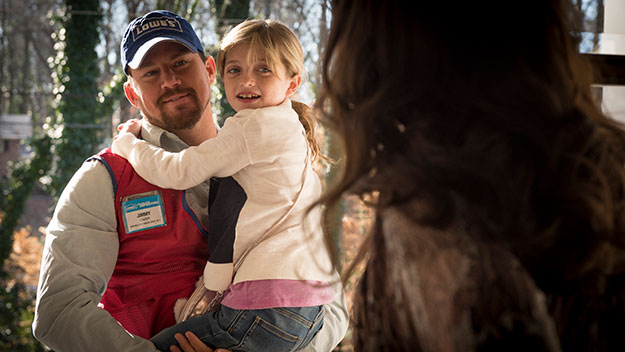
I’m not sure this is an easy sell. It might be too smart a movie for the milieu of the characters in the movie, and for people like me NASCAR might not be appealing. So I think it’s tricky.
I’m curious too. For that reason, we did two previews—in Dallas and in Nashville. And it seemed okay. People got all the jokes. I came away relieved. But I’m as curious as you are.
Could we talk a little bit about the distribution experiment? It sounded to me similar to what independents have done in the past. Sell foreign rights and make the movie with that, then sell domestic platforms separately.
Sure. The difference is that all these different platforms didn’t exist in the past. And so we used those sales to cover our P&A costs. So there’s nothing to recoup when the movie opens, and there’s no one at risk. It was really fun to go through the P&A budget. Just as a matter of habit, all companies carve out a certain amount of a movie for year-end awards things. And we said, let’s get rid of all of that. Take all of that money and buy some more on-line ads.
These ancillary rights that paid for the P&A didn’t exist in the past. Back in the days when DVDs were making a lot of money, that was great, but that was downstream, six months or a year after the movie opened. But you’re right. Joseph E. Levine was doing this 55 years ago. What he didn’t have was a way to completely neutralize his P&A costs, and those are the costs that have been rising precipitously over the past 15 years. And it’s a war of attrition for everybody. If you’re a studio and somebody else is spending $35 million to open their movie, then you’ve got to spend that. And I’ve been a real loudmouth about it. It’s a reaction to not wanting to make small stuff for the rest of my life, and I’m obviously out of sync with what the studios are doing. And I have real issues with the economic structure they operate under. So if I want to make a movie, this is the only way I can. I’m sure some people will say, that’s great for him. He has the résumé to go do that. But if I wanted to be complacent about it, I could keep making movies for the studios. I don’t have to do this. I’m trying to be the flying wedge that opens this thing up so that other people can use it. So at least now when I say, here’s how I think we should spend the money, it’s our money. It’s not easy to sit in a room with a studio and dictate to them how they should spend their money.
The structure of the spend for Logan is nothing that a studio would do. You’d never get anybody to sign off on the figure itself and on how we use it. They’d say it’s too little, too tilted to digital, and it’s too late. And their tracking stuff is ridiculous. A thousand people called on their landlines is how the studios decide how a movie is going to perform and how many screens it should get. So we have a set of people working for us and they have a very different metric that predicts how a movie is going to perform, and if we do perform, we’ll be able to haul this information out and show that they are just not in the 21st century. I’m of a belief that for a certain kind of film, putting the trailer out four months in advance is ridiculous. A movie is never as hot as when the first trailer drops. I’ve been having conversations about radically reducing the time between announcing the movie and dropping the trailer, and releasing the movie. People consume culture now at a faster rate. If I had my way I’d compress all of that, at least for a genre movie. Another thing I learned is how many people don’t make the decision about what they are going to see until very late. Three days out, 30 percent of people don’t know what they are going to see on Friday. Waiting for this thing to drop has been the longest four months, because there are just so many questions I want answered one way or the other.
Amy Taubin is a contributing editor to Film Comment and Artforum.



